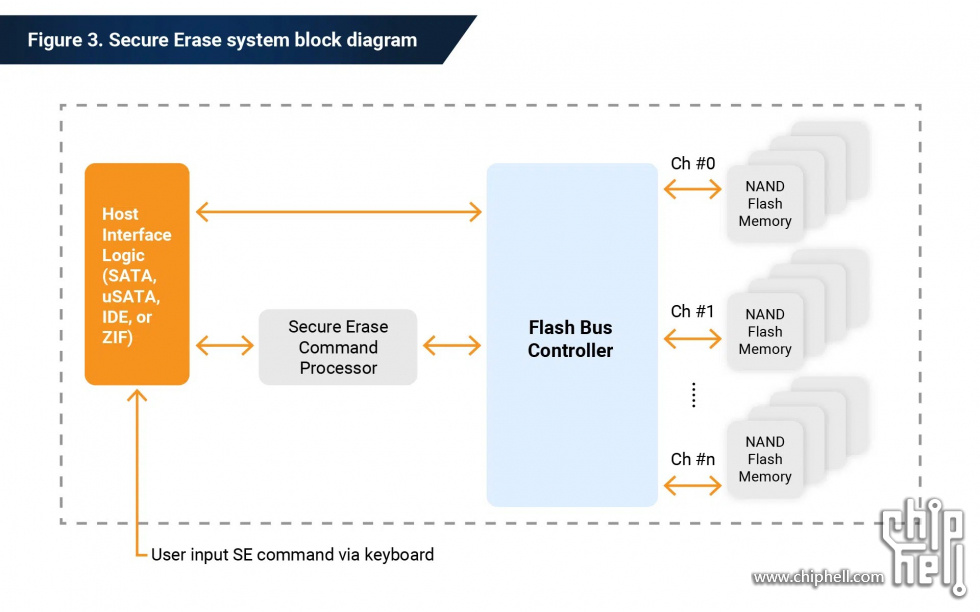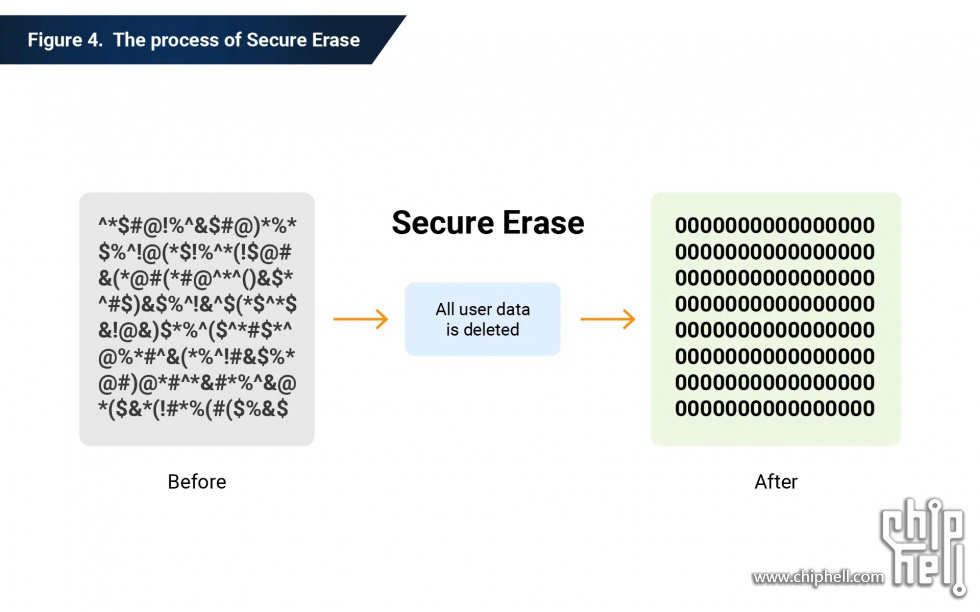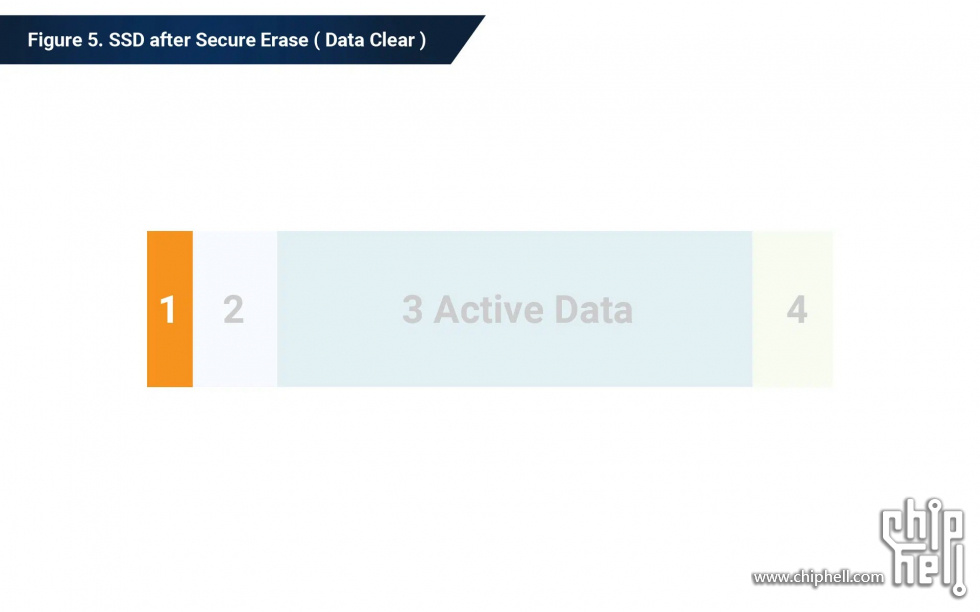|
|
What is secure erase?
Secure erase describes the operation of entirely and irretrievably deleting user data from a storage device for privacy, confidentiality, and security reasons. Secure erase is a data erase method supported by the SSD controller that removes stored data from the drive’s flash cells.

Secure erase is an irreversible process. Once you perform a secure erase on a drive, the erased content is unrecoverable. You can initiate secure erase through a standard ATA Security Erase command to a drive’s controller using the drive’s IO interface. The command overwrites the NAND blocks of the drive (in-use and spare) with zeros.

When deleting data using secure erase, the tool erases the LBA (Logical Block Address) mapping table, active data, OS, and partition. Secure erase removes data included in areas 2, 3, and 4 (as shown in Figure 2) but does not touch system area blocks (as shown below in Figure 5, block #1).

f secure erase is interrupted by an unexpected power cut, the process will restart on the next SSD power-on state. Secure erase deletes all data and returns an SSD to a factory default state. This command is useful when running performance and benchmark tests. |
|
 310112100042806
310112100042806
